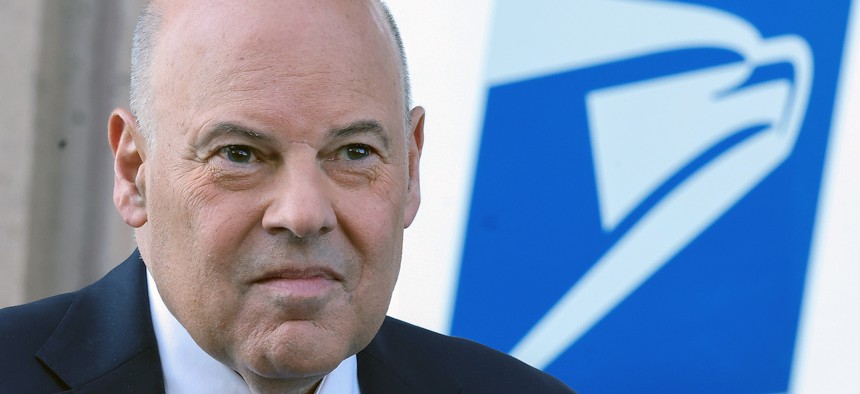
The negative financial numbers occurred despite the Postal Service growing its total revenue by $500 million. Kevin Dietsch/Getty Images
USPS loses $6.5B in FY2023 and says another year in the red is coming
The losses come despite postal management initially projecting it would break even for the year.
The U.S. Postal Service lost $6.5 billion in fiscal 2023 despite initial projections it would break even for the year, and leadership cautioned the agency will once again be in the red in fiscal 2024.
Looking at only the parts of the operation that USPS leadership considers within its control, losses spiked to $2.3 billion compared to just $500 million in fiscal 2022 and a controllable profit of $1.5 billion in fiscal 2021. At the start of fiscal 2023, USPS forecasted a $4 billion loss. The negative financial numbers occurred despite the Postal Service growing its total revenue by $500 million.
Postal leadership attributed much of the losses—about $5.6 billion—to two factors: ongoing inflation and a miscalculation of what it must statutorily contribute toward its pension fund. Postmaster General Louis DeJoy also noted USPS is incurring upfront costs as it updates its network as part of his 10-year Delivering for America plan.
USPS technically saw a new profit of $56 billion in fiscal 2022, though that was due to the one-time cash relief from the changes in the Postal Service Reform Act.
Despite the promised reforms, DeJoy conceded his agency will once again fail to cover its costs in the current fiscal year. All told, postal management projected a relatively stable loss of $6.3 billion in fiscal 2024.
“Despite substantial reductions in our cost of operations and growth in our package revenues planned, we will not reach breakeven results in 2024 either,” DeJoy said.
As part of those changes in 2024, DeJoy pledged to complete 20 new processing facilities and 100 sorting and delivery centers, close more than 40 annexes, deploy 30,000 new delivery vehicles, eliminate $1 billion in transportation costs and grow package revenue by $1 billion. He also said USPS would slash 28 million work hours. The postmaster general acknowledged the workforce is “undergoing dramatic change both in where and how they work,” and asked for the understanding of the American public and Congress as they adapt.
USPS projected it would slash another 25 million work hours in fiscal 2024. It ended the year with $21 billion in cash, but due to the ongoing costs of its reforms it will continue to borrow money this year.
Amber McReynolds, a member of the postal board who was named vice-chair on Tuesday, noted that USPS was meeting some of its goals under DeJoy’s plan while missing others. She said, for example, the Postal Service is improving its workforce overall while struggling to hire in rural areas and maintain service there. McReynolds added the Postal Service is particularly struggling to reach its objectives on finances, on-time delivery and employee safety.
“It is OK to celebrate success while also being open to ideas for further improvement and adjustments to the DFA, if needed, as challenges arise or conditions change,” McReynolds said.
DeJoy suggested his reforms, not counting those provided legislatively in the Postal Service Reform Act, have reduced losses in recent years from up to $39 billion to $19 billion. He once again called on lawmakers, regulators and stakeholders to not get in the way of any of the changes he is looking to make going forward. He requested patience as USPS oversees a “dramatic change” to both its operations and culture and acknowledged there will inevitably be some bumps in the road.
“All of this will be done with calculation that keep disruptions to service to a minimum,” DeJoy said, “but please be aware that this is not a perfect science. The road to success and the scope of the changes we are compelled to make will invariably result in some disruption on any given week, in any given area, for any given service.” He vowed to quickly address any issues that arise.
Significant price hikes enabled USPS to grow revenue—by 1% for packages and 2.1% for First Class mail—despite volume declines in both categories. Postal leadership on Tuesday vowed to grow package revenue going forward, a key part of DeJoy’s vision for the agency. Marketing mail saw a 6% decline in revenue and a volume dip of 11%.
Art Sackler, president of the Coalition for a 21st Century Postal Service, said the price hikes are driving customers away from USPS and called for congressional intervention.
“Postal costs and prices are increasing much faster than businesses and consumers can keep up,” Sackler said. “The Postal Service must find a way to hold the line on costs, just as every business in America must.”







